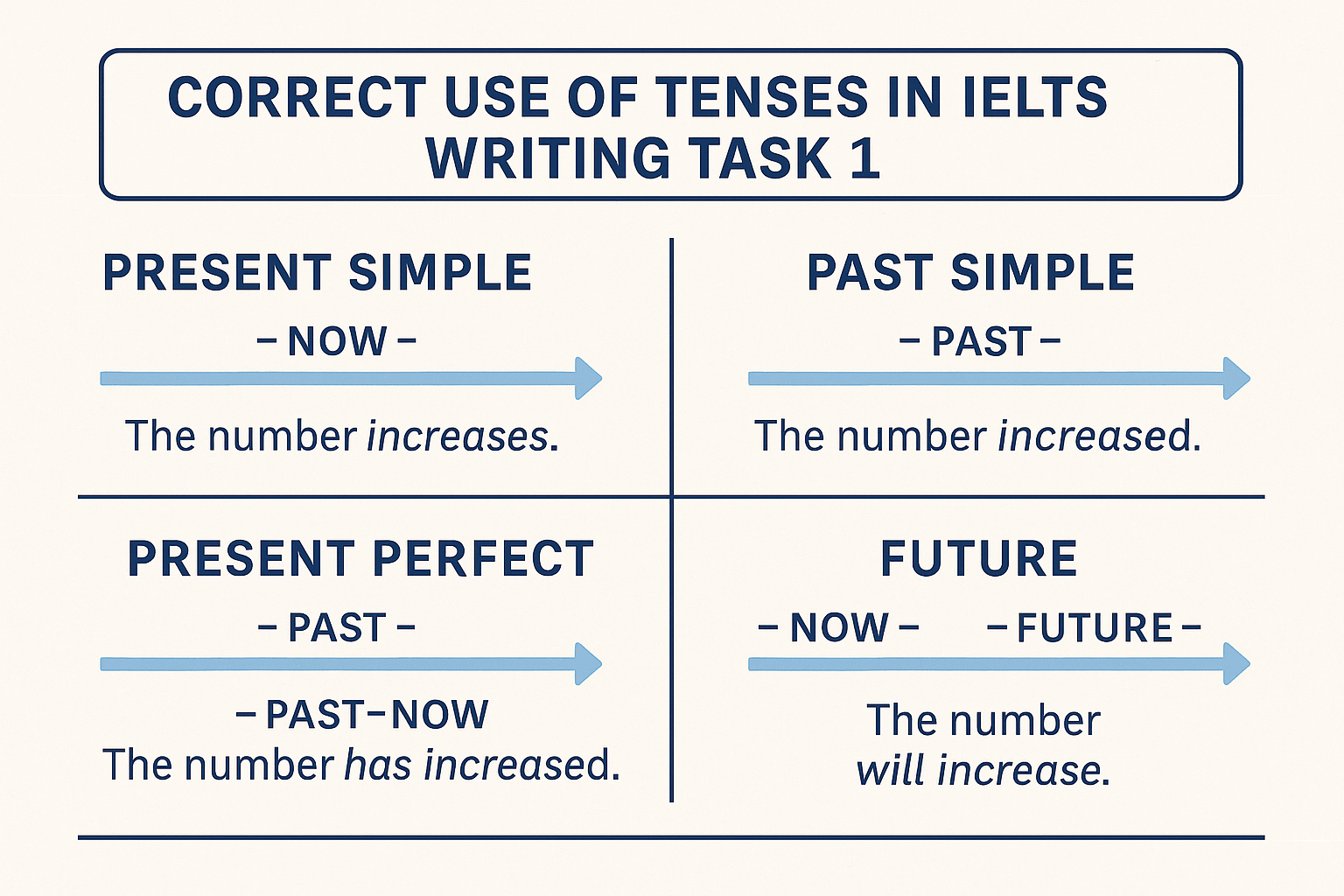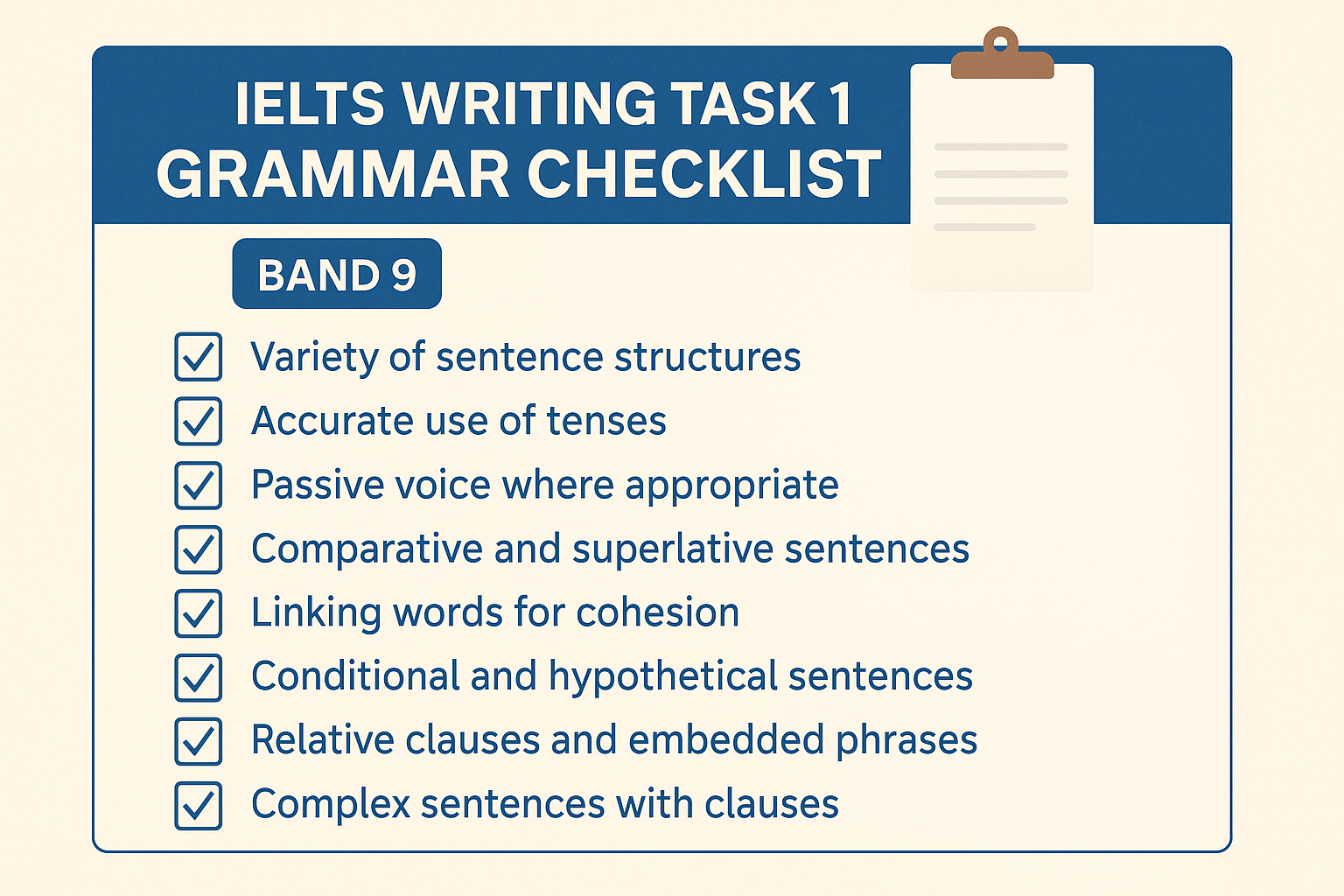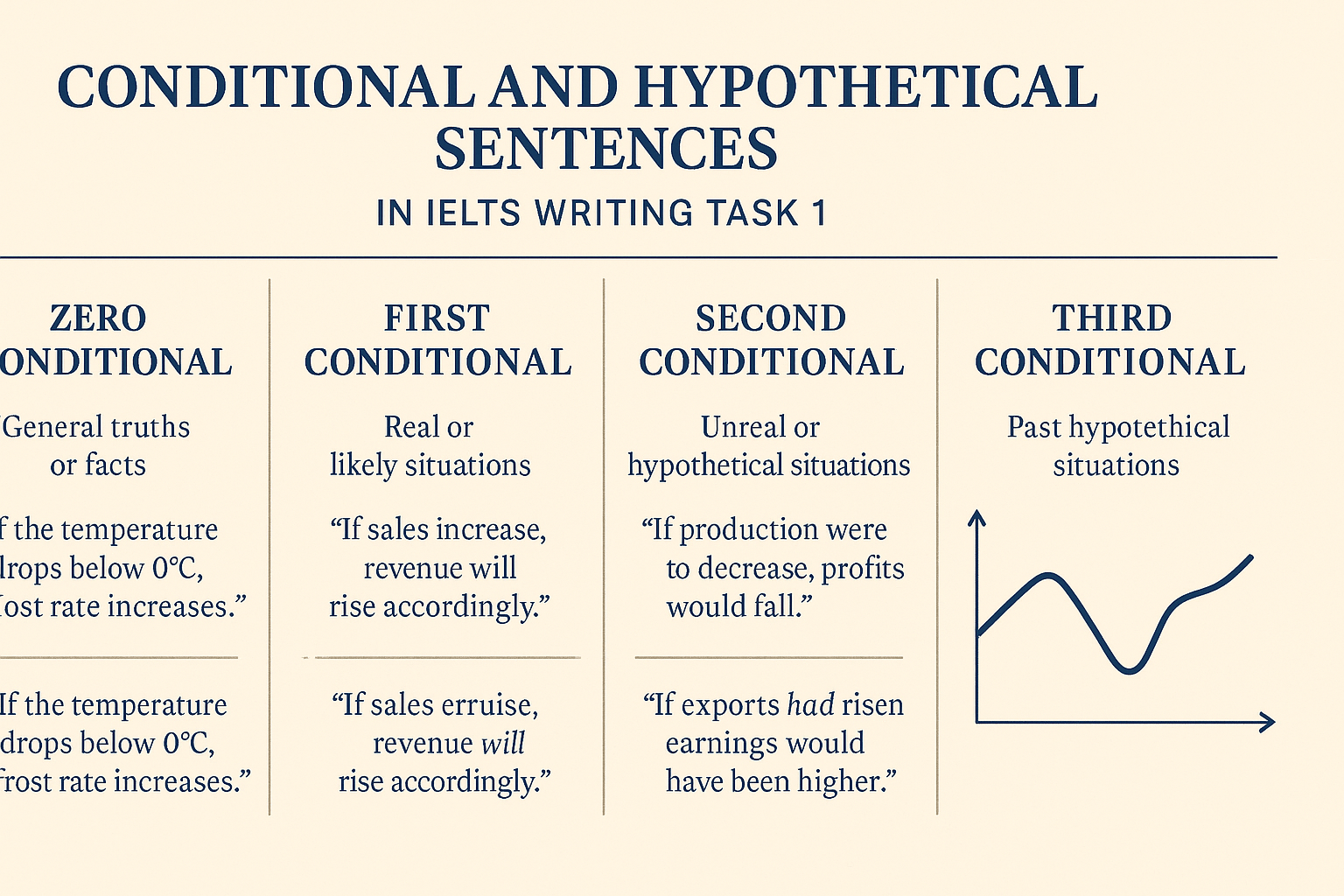- Why Mastering IELTS Writing Task 1 Tenses Matters
- Understanding the Main Tenses Used in IELTS Writing Task 1
- How to Choose the Right Tense for Different Task Types
- Common Mistakes to Avoid with IELTS Writing Task 1 Tenses
- Practical Tips for Using Tenses Accurately in IELTS Writing Task 1
- Combining Tenses with Grammar and Vocabulary for Band 7+
- Sample Paragraph Using Correct Tenses
- Final Thoughts
One of the most common challenges students face when preparing for IELTS Writing Task 1 is using the correct tenses. Getting your tenses right is crucial because it helps you clearly describe data, trends, and processes, which can make a big difference in your score. As an IELTS instructor who has worked with many learners worldwide, I’m here to guide you through the key tenses you need to master for IELTS Writing Task 1 — from present simple and past simple to present perfect and future forms.
Understanding how to use these tenses correctly will improve the clarity, accuracy, and professionalism of your writing. For more official resources, you can always visit the IELTS official website, or check out the excellent materials from the British Council and IDP IELTS.
Why Mastering IELTS Writing Task 1 Tenses Matters
Using the correct tense in IELTS Writing Task 1 is essential because you’re often describing data over time or explaining processes that involve stages. Mistakes in tense can confuse the examiner about the timeline or the nature of the information you are presenting.
In my experience, mastering tenses not only helps your writing become clearer but also demonstrates a higher level of English proficiency, which is key to achieving a Band 7 or above.
Understanding the Main Tenses Used in IELTS Writing Task 1
Below, I’ll break down the four main tenses you’ll use in IELTS Writing Task 1, with tips and examples for each.
Present Simple Tense: Describing General Facts and Current States
The present simple is often used when describing what a chart, graph, or diagram shows, especially if the information is generally true or static.
Examples:
- The bar chart shows the number of students enrolled in different courses.
- The process involves three stages.
The present simple helps you state facts clearly and professionally. Use it when talking about what the data or image represents.
Past Simple Tense: Describing Completed Actions or Trends in the Past
Use the past simple when the data refers to a finished period in the past.
Examples:
- The line graph showed a steady increase in sales from 2010 to 2015.
- Unemployment rates fell significantly in 2018.
This tense is crucial when describing trends or changes that happened during a specific time frame in the past.
Present Perfect Tense: Describing Trends that Continue to the Present
The present perfect is useful for describing actions or trends that began in the past and continue up to the present or have relevance now.
Examples:
- The population has increased steadily over the last decade.
- Electricity consumption has risen significantly since 2000.
This tense shows ongoing relevance and is especially helpful when the data implies continuity.
Future Tenses: Talking About Predictions or Future Projections
When the task includes future predictions or estimates, use the future simple tense with “will” or “going to.”
Examples:
- The graph predicts that energy use will double by 2030.
- Water consumption is expected to increase over the next 20 years.
Using future tenses accurately shows you can interpret and describe projections well.
How to Choose the Right Tense for Different Task Types
Describing Charts and Graphs
For most charts and graphs, you’ll use the present simple to describe what the visual shows and the past simple for historical data.
Example:
The chart shows the population growth between 1990 and 2020. The population increased steadily from 1 million to 3 million during this period.
If the chart shows ongoing trends, the present perfect can be appropriate.
Describing Processes or Diagrams
When describing a process or diagram, use the present simple to explain each step since the process is timeless.
Example:
Water is heated in the boiler before passing through a series of pipes.
Describing Trends Over Time
When describing changes over a period, use past simple for completed periods and present perfect if the trend continues.
Describing Future Projections
Use future tense only if the task specifically asks for predictions or the chart includes forecast data.
Common Mistakes to Avoid with IELTS Writing Task 1 Tenses
- Mixing tenses in the same sentence unnecessarily
Incorrect: The graph shows data from 2010 to 2015 and increased sharply in 2013.
Correct: The graph shows data from 2010 to 2015 and shows a sharp increase in 2013. - Using present simple for past data
Incorrect: The sales increase in 2015.
Correct: The sales increased in 2015. - Forgetting to use future tense when required
Incorrect: The chart predicts energy use doubles by 2030.
Correct: The chart predicts energy use will double by 2030.
Practical Tips for Using Tenses Accurately in IELTS Writing Task 1
- Identify the time frame the data covers before choosing your tense.
- Keep tenses consistent when describing the same period or event.
- Use timelines or time phrases like “between 2000 and 2010,” “since 2015,” or “by 2030” to help clarify tense choice.
- Practice with real IELTS tasks from the British Council or IDP IELTS.
- Proofread your writing to check for tense errors and fix inconsistencies.
Combining Tenses with Grammar and Vocabulary for Band 7+
Tenses are just one part of your grammatical toolkit. For Band 7 and above, you need to combine correct tenses with sentence variety, passive voice, and precise vocabulary. If you want a deeper dive into grammar, check my detailed guide on IELTS Writing Task 1 Grammar for Band 7–9 and complement your writing with rich vocabulary from my IELTS Writing Task 1 Vocabulary Complete Guide.
Sample Paragraph Using Correct Tenses
The line graph shows the average monthly temperatures in London from 2000 to 2020. Temperatures increased steadily between 2000 and 2010. Since 2010, the trend has continued upward. It is predicted that temperatures will rise further by 2030.
Final Thoughts
Mastering IELTS writing task 1 tenses takes practice, but it’s a vital step toward clear, accurate, and professional writing. Focus on understanding when to use present simple, past simple, present perfect, and future tenses. Practice consistently, read model answers, and review your writing carefully.
If you want more help mastering grammar and vocabulary, remember to explore my comprehensive guides linked above. With dedication and the right strategies, you can confidently reach your target band score.
Good luck!






One Response
Its like you read my mind You appear to know a lot about this like you wrote the book in it or something I think that you could do with some pics to drive the message home a little bit but instead of that this is fantastic blog An excellent read I will certainly be back